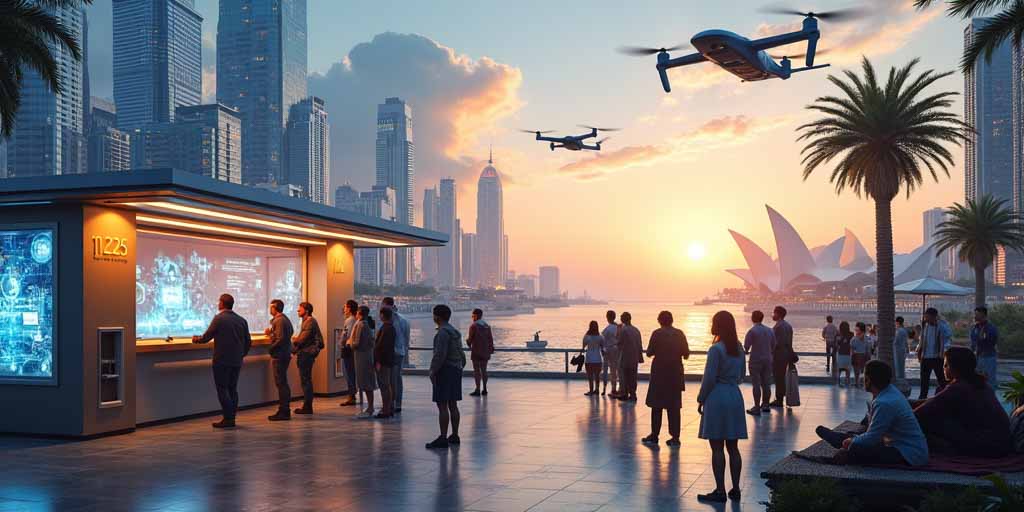The Next Wave: Immigration Trends for Global Movers in 2025
As we approach 2025, the landscape of global migration continues to evolve, shaped by economic changes, technological advancements, and shifts in political climates. For those considering a move across borders, staying informed about the latest immigration trends is crucial. This blog post explores the significant trends that are shaping the future of immigration, offering insights and guidance for anyone looking to make an international move in the near future.
1. Increased Demand for Skilled Workers
In 2025, the global economy is increasingly driven by sectors such as technology, healthcare, and green energy. Countries like Canada, Germany, and Australia are actively seeking skilled immigrants to fill shortages in these sectors. For instance, Canada’s Express Entry system continues to be a popular pathway for skilled workers, emphasizing attributes such as language proficiency, education, and work experience.
Example: A software developer from India may find ample opportunities in Canada’s tech hubs like Toronto and Vancouver, where their skills can not only lead to a prosperous career but also contribute to the local economy.
2. Remote Work and Digital Nomad Visas
The rise of remote work, accelerated by the COVID-19 pandemic, has led to the creation of digital nomad visas. These visas allow individuals to live in a foreign country while working remotely for companies that are not based in that country. Countries such as Estonia, Barbados, and Croatia offer such visas, providing a unique blend of work flexibility and cultural immersion.
Example: A graphic designer from the UK could apply for a digital nomad visa in Croatia, enjoying the Mediterranean lifestyle while continuing to work for clients globally.
3. Focus on Entrepreneurial and Investment Opportunities
Many countries are refining their immigration policies to attract foreign entrepreneurs and investors who can drive economic growth. The USA’s EB-5 Immigrant Investor Program and the UK’s Innovator Visa are examples of how nations are encouraging business-related immigration, offering a pathway to permanent residency based on investment and business activities.
Example: An entrepreneur from Brazil with a groundbreaking tech startup idea could leverage the UK Innovator Visa to establish their business in London’s tech scene, gaining access to a vibrant market and investment opportunities.
4. Simplified Application Processes Through Technology
Technological advancements are streamlining immigration application processes. Online portals, AI-driven chatbots for customer service, and digital submission of documents are becoming commonplace, making the application process quicker and more user-friendly.
Example: Applicants for the Australian visa can now manage their application entirely online, from document submission to status tracking, reducing the processing time and making it easier to plan their move.
5. Increased Scrutiny and Security Measures
As international mobility increases, so does the focus on security. In 2025, expect stricter visa screening processes, with more countries adopting biometric verification and background checks to enhance border security.
Example: Prospective migrants to the EU may need to undergo a detailed background check and biometric registration as part of the ETIAS system, which is designed to strengthen the security of the Schengen Zone.
6. Regional Mobility Agreements
Regional mobility agreements are becoming more prevalent, allowing citizens of member countries to live and work in other countries within the same region with fewer restrictions. The European Union’s freedom of movement principle is a prime example, and similar agreements can be seen in regions like the Caribbean and Southeast Asia.
Example: A French citizen looking to relocate to Germany for work purposes benefits greatly from the EU’s freedom of movement, requiring no work visa to make the move.
7. Humanitarian Responses to Global Challenges
In response to global challenges such as climate change and political instability, countries are adapting their immigration policies to offer refuge and assistance. This includes temporary protections, refugee resettlement programs, and special visas for those affected by crises.
Example: Canada continues to expand its refugee resettlement programs, offering a new life to individuals from countries experiencing severe conflict or environmental disasters.
Conclusion
The landscape of global immigration in 2025 is dynamic and offers a range of opportunities for skilled workers, entrepreneurs, remote workers, and those seeking safety and stability. Whether you are looking to advance your career, invest in a new market, or simply change your living environment, understanding these trends can significantly enhance your decision-making process as a global mover. Stay informed, prepare thoroughly, and your international relocation could be your next great adventure.
